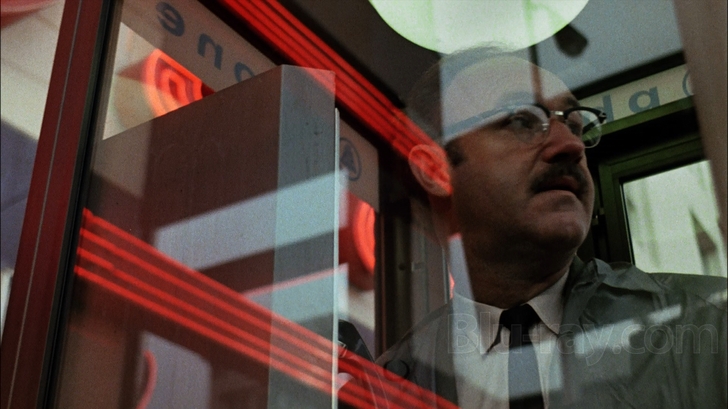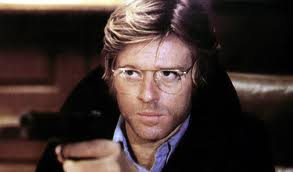Though there are some spoilers sprinkled throughout this piece for some of the films, they are largely vague for readers who have not seen the films in question.
In his book Nixonland: The Rise of a President and the Fracturing of America, journalist Rick Pearlstein posits that Nixon, one of history’s most reviled presidents, manipulated social trends, tense racial crises and even war to assume the office, and, perhaps inadvertently, created the way the Right and Left deal with each other in the present day. The scars of the seventies indeed still hang like a dark cloud over Washington, its internal systems ravaged by covert bugging operations and illegal payoffs. With Edward Snowden’s NSA revelations and Wikileaks at the forefront today, America has once again regressed into paranoia, though nothing in contemporary cinema compares to the violent, bleak reactions filmmakers had to the Watergate scandal. The occasional modern conspiracy thriller, such as Closed Circuit, typically winds up under the radar these days. Why? Because America already saw this show, and now it’s on Blu-ray.
The Parallax View (1974)
Two years before Alan J. Pakula celebrated the journalistic tenacity that triumphed over real-life conspiracy in All the President’s Men, he took a much harsher look at the world of politics. The Parallax View opens with a shocking assassination atop Seattle’s Space Needle. Several years later, Warren Beatty’s hard-drinking journalist begins an investigation when witnesses to the event wind up dying in mysterious accidents. Soon he is on the trail of the mysterious Parallax Corporation. Most interesting is the script (written by David Giler and Lorenzo Semple Jr.) and Pakula’s decision to leave the conspirators’ methods and motives largely open to interpretation, dropping the viewer as neck-deep into the plot as Beatty.
Three Days of the Condor (1975)
Being an analyst for the CIA appears to be a mind-numbing office job for Robert Redford’s Joe Turner. That is until one day he goes out for lunch and finds all his co-workers riddled with bullets. Redford goes on the run, trying to piece together what seemingly inane connections he made at his day job that let loose conspirator Cliff Robertson’s assassins. Though Redford seemingly walks away safely, he is left with the vague musings of gunman Max Von Sydow on just how, perhaps one fine day, his murder might take place.
Invasion of the Body Snatchers (1956)
Had the studio allowed Don Siegel to keep his original ending, this classic would have been all the bleaker. Rather, they opted to shoot a prologue and epilogue to bring the audience in for a softer landing. Still, lead Kevin McCarthy screaming helplessly on the highway that “They’re here!” is enough to send chills down your spine. Though many critics have suggested the first film adaptation is an allegorical tale about the Red menace of Communism, those involved with the production have often dismissed this reading. More likely is that the fictional town of Santa Mira, California is inspired by Levittown, America’s first suburb, founded in New York in 1947. Today, it rings even more true. Driving through the U.S. is impossible without passing a gated community where all the houses look the same.
Invasion of the Body Snatchers (1978)
Invasion of the Body Snatchers is arguably the only film property with a legitimate reason to be remade every generation. The premise is simple and frightening, enough to adapt along with social context. In the 1970s, Phillip Kaufman directed a frenetically shot, paced and scored version focused on spoofing the “Me” generation, replete with self-help gurus, mud baths, and a ranting Jeff Goldblum. The film’s final shot remains one of the most horrifying and depressing in the history of science fiction.
The Ghost Writer (2010)
Roman Polanski returns to the classic 70s paranoia that made him a cinephile household name prior to becoming an infamous household name. Ewan McGregor stars as the nameless title character, hired to replace a controversial Prime Minister’s previous biographer who mysteriously drowned. The paranoia is highlighted by a thrilling chase through a ferry that leads the writer directly into the hands of who he thinks is the enemy. The supposed conspiracy that McGregor hunts down turns out to be a red herring for something far more insidious. In the end, as is often the case, the pages of details just blow away, lost to the ether.
Arlington Road (1999)
Arlington Road was now-notable Hollywood hack Ehren Kruger’s Nicholl Fellowship Award-winning script, launching his career of writing movies where giant robot aliens punch each other. Before he ruined the Scream franchise with his deplorable third entry, Kruger wrote this pre-9/11 suburban paranoia thriller. Professor Jeff Bridges, who lost his wife to a Ruby Ridge-esque FBI raid, begins to suspect his new neighbours (Tim Robbins and Joan Cusack) are terrorists. The script feels like an academic work, though it’s certainly the best Kruger has ever produced, helped by a genuinely creepy performance by Tim Robbins.
Nick of Time (1995)
Long before the advent and 8-season run of 24, Johnny Depp starred in John Badham’s forgotten, exciting real-time thriller. With only 80 minutes to assassinate a gubernatorial candidate before Christopher Walken murders his daughter, Depp desperately tries to get word to anyone he can, eventually aligning with one-legged shoe shiner Charles S. Dutton. Though the film has a much more favourable Hollywood outcome than others on this list, not everything gets wrapped up nicely.
Missing (1982)
Costa-Gavras’ film tells the true story of journalist Ed Horman’s (Jack Lemmon) search for his radical son who vanished after the U.S.-backed coup in Chile. Horman is a devout Christian scientist, only putting his faith in prayer and, it appears, his own government. Lemmon delivers a heartbreaking performance as he struggles to realize the latter faith is based on falsehoods.
Blow Out (1981)
Brian De Palma’s classic is about a film sound engineer (John Travolta) trying to uncover and survive the cover-up of a Chappaquiddick-like murder. Ultimately, Travolta is too late to realize that the powers that be remain undefeated for a reason. Resistance is futile, it’s best just to cover your ears and not hear the screams.
The Conversation (1974)
Francis Ford Coppola’s classic paranoid nightmare stars Gene Hackman, in one of his finest roles, as a surveillance expert who gets in over his head after recording an ominous conversation. To give anything else away would be somewhat futile; as with the same year’s The Parallax View, The Conversation gives the audience a ground-floor view of what it’s like to be embroiled in the mystery.
— Kenny Hedges











